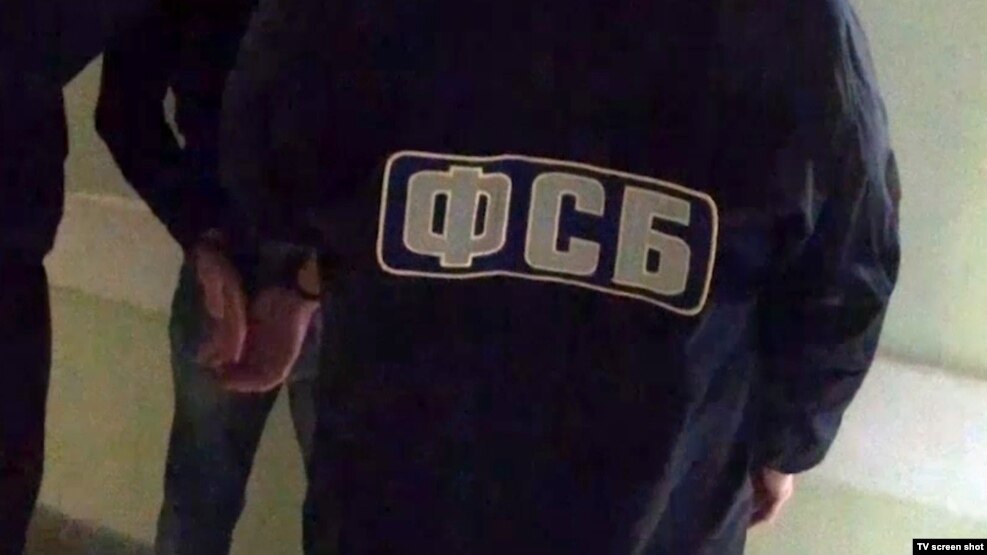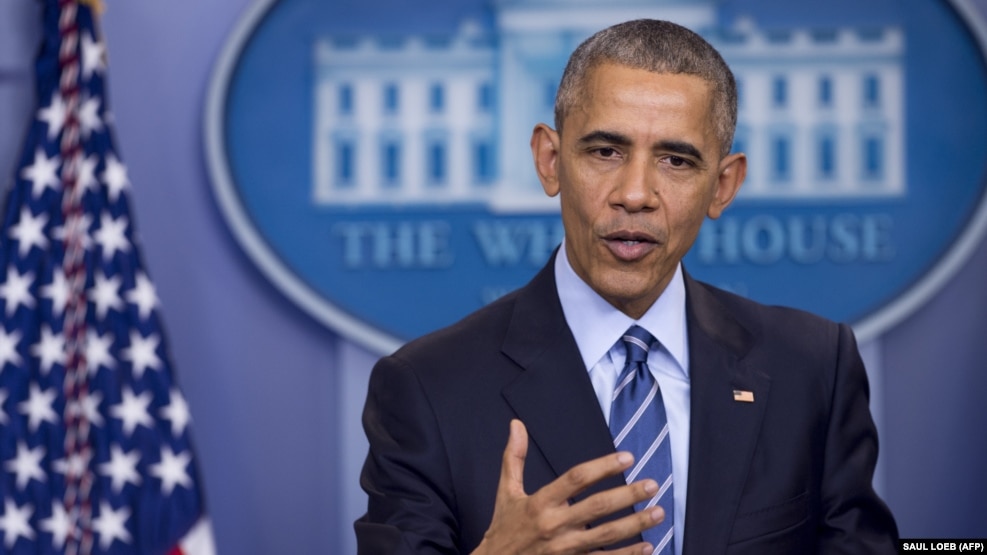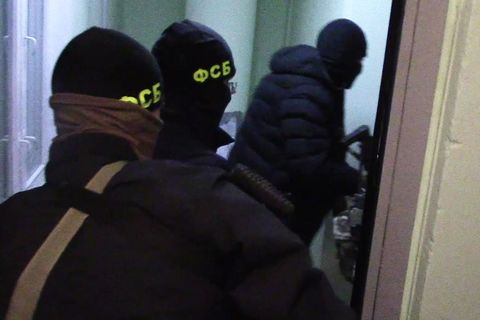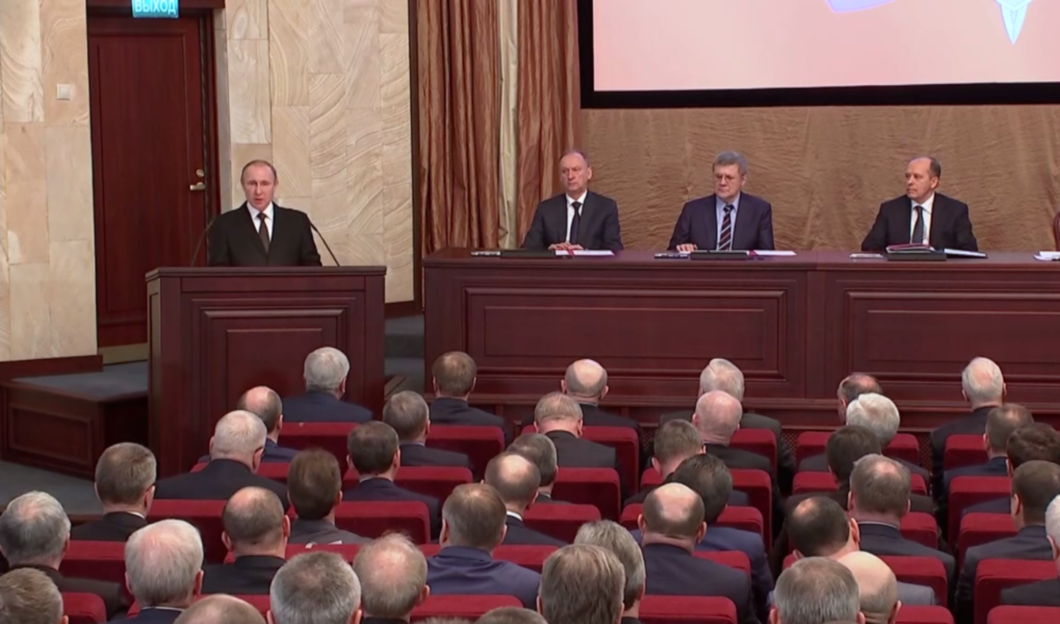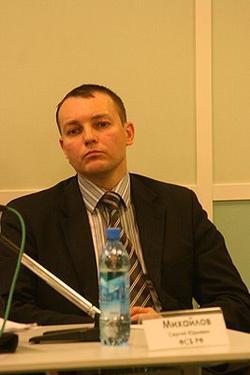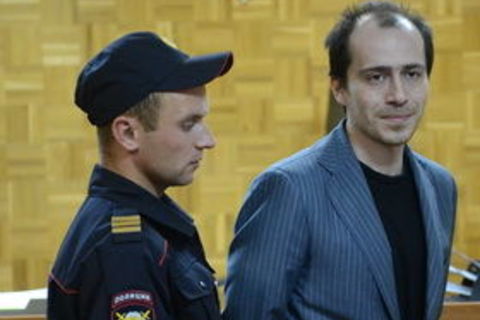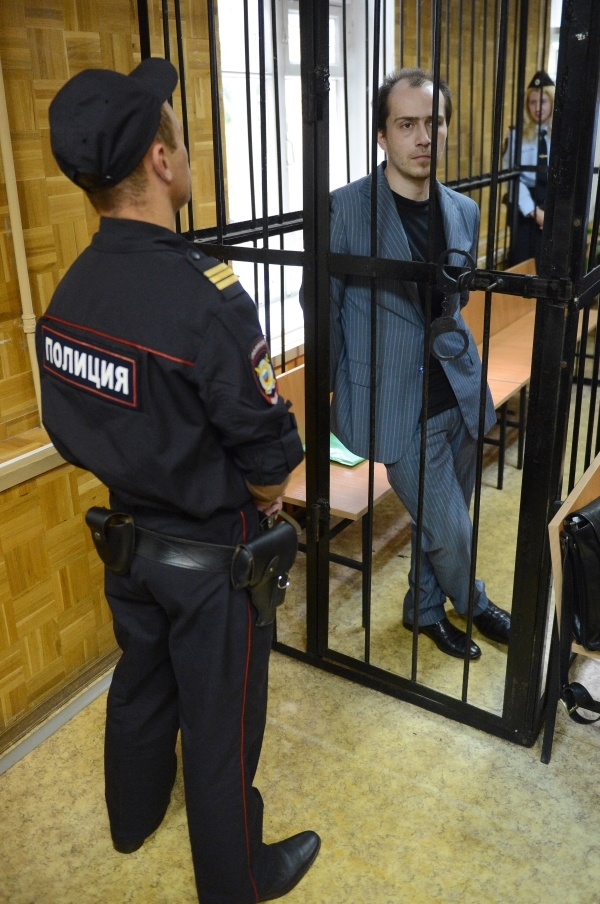$200 Million More Invested Into Right-Sized Advanced Nuclear Power
http://www.forbes.com/sites/rodadams/2017/02/01/200-million-more-invested-into-right-sized-advanced-nuclear-power/#4f24151b3a31

In this picture taken on Thursday, June 25,
2015, water vapor rises from cooling towers of a conventional large
nuclear power plant. (AP Photo/Petr David Josek)
A complete SEALER power plant likely would fit inside one of the small cylindrical buildings in the foreground.
A complete SEALER power plant likely would fit inside one of the small cylindrical buildings in the foreground.
SEALER (Swedish Advanced Lead Reactor) is a fast spectrum nuclear reactor that uses low enriched uranium oxide fuel (19.5%) cooled by molten lead.
The companies involved describe their agreement as enabling "...LeadCold to license and construct the first privately-funded lead-cooled nuclear power plant."
Who Are These New Players In The North American Advanced Nuclear Industry?
LeadCold is a Swedish-Canadian company spun out of the Royal Institute of Technology (KTH) in Stockholm. VINNOVA (The Swedish Innovation Agency) has been supporting applied science, materials research and systems engineering at KTH for lead-cooled systems since 1996.That long-term effort resulted in a materials breakthrough that now supports a commercial product development effort. Lead has been an intriguing nuclear plant coolant option since the beginning of the Atomic Age, but it has a few characteristics that have – up to now – limited its utility.
Essel Group ME is a wholly owned subsidiary of Essel Group, a 90-year old multinational conglomerate headquartered in India with a wide array of subsidiary companies that operate in high technology, infrastructure, logistics, media and packaging.
Recommended by Forbes
Essel Group ME focuses its investments in subsidiaries companies in
natural resources, education, logistics and industrial supply in the
Middle East, Europe and Africa.
Their business focus gives them ample opportunities to experience
both the importance of reliable power and the logistical challenge of
supplying it to remote areas of the world. They know that electricity
often costs ten times as much in a mining outpost in northern Canada or
central Africa than it does even in high-cost grid-connected areas.
Why Canada?
LeadCold is following a well-established path for introducing new
technology and then refining that technology to lower unit costs and
expand the customer base. After the technology has been refined enough
so that the developers feel confident in moving it out of the
laboratory, the next step is finding an early adopter market.
Early adopters are customers that need – or want – a new technology
so much that they are willing to pay dearly for the special capabilities
that new product brings them. They are not penny pitchers who
experience remorse if a better and cheaper version becomes available in a
few years because they have been addressing whatever problem they have
during that time period.
Canada is shaping up to be a popular early adopter target for small
nuclear power systems because they have both a capable regulator and
communities or mining operations that need a new power option. The
target areas have two options for electricity - high priced diesel
generators burning fuel with an expensive logistics challenge or doing
without power.
Solar systems are laughably inadequate in areas that often don't see
the sun for months at a time. Wind turbines don't function with bitterly
cold winds. Natural gas pipelines are nonexistent and coal has all kind
of issues that has always limited its use in Arctic regions. Even long
transmission lines are not an option because of cost, environmental
impacts and weather vulnerability.
The Canadian Nuclear Safety Commission has a reputation as a capable
regulator with many decades of experience in safe nuclear plant design
review and operations oversight. It also has a process that is amenable
to technologies that use nontraditional fuels and coolants.
Sweden, the original home of LeadCold, has similar remote areas and a
capable regulator, but it is currently lead by a government that
doesn't support nuclear energy development.
As Senator Murkowski made clear during Governor Perry's confirmation
hearing to become the new Secretary of Energy, Alaska has communities
with similar power needs. Unfortunately, the U.S. NRC has not yet
implemented an acceptable process for reviewing nuclear reactor designs
that use coolants other than water.
What Is A Sealer?
SEALER (Swedish Advanced Lead Reactor) is a fast spectrum nuclear
reactor that uses low enriched uranium nitride fuel (19.5%) cooled by
molten lead. The core of the reactor is the smallest possible physical
size that will support critical operations under coolant, enrichment and
neutron spectrum conditions.
The lead circulates through the system at atmospheric pressure by
thermal convection, using no pumps in the primary system. The secondary
system, where water is pumped into the steam generators to be converted
into high-pressure steam by removing heat from the lead, relies on
electricity-driven pumps.
If there is a loss of electrical power that stops the flow of water
into the steam generators, the primary lead-cooled system will gradually
heat up, but it will not exceed any thermal limits on the reactor fuel
or cladding for several weeks.
If restoration of cooling is delayed past that coping time, designers
claim that the lead will retain 99.9% of any fission products that are
released from the fuel rods.
The system design criteria is that fission product retention must be
sufficient so that there is no need to consider evacuation as a means of
protecting people. The places where SEALERs will operate are remote;
large-scale evacuation is virtually impossible.
Each identical unit will be capable of producing between 3 and 10 MW
of electricity. At lower power, the fuel lasts longer. The planned core
lifetime is from 10 to 30 years. At the end of life, the entire unit
will be replaced with the old system being transported to a centralized
recycling plant.
When a SEALER has reached the end of its operating life, the reactor
is shut down and the lead solidifies. It provides most of the shielding
required to protect people during transportation.
Why Lead? Why Now?
Lead has long been an option for cooling nuclear reactors and
transferring fission heat into water that can then boil to make steam
for driving a turbine. Like sodium, lead does not slow neutrons down.
Fast spectrum reactors enable eventual fission of all uranium isotopes
through the process of converting U-238 to Pu-239. The breeding ratio
for a SEALER will be significantly greater than one, essentially
removing all concerns about fuel resources for a few thousand years.
Compared to sodium, lead has somewhat higher heat capacity and isn't capable of explosive reactions with air or water.
Two main drawbacks have limited its use. 1) Its melting point is
substantially higher than sodium. 2) Nickel, a common alloying material
in steel, is soluble in hot lead, leading to serious material concerns
in a relatively short period of time.
The technological breakthrough developed by KTH in cooperation with
the Swedish steel industry is a new aluminum and zirconium alloyed steel
(Fe-10Cr-4Al-Zr) that provides adequate long-term performance in hot
lead. After 19,000 hours of exposure at 550 C, the material appears to
be in like new condition.
By limiting operating temperature to 450 C the designers are
confident that SEALERs using the new alloy will be able to operate
reliably for as long as 30 years. That confidence, of course, will be
something that LeadCold will have to demonstrate to the satisfaction of
the regulatory agency.
LeadCold expects that each SEALER will cost $75 million USD for the early adopters.
About Us
http://esselgroupme.com/essel-group-me/
Essel Group ME (“EGME”) is wholly owned by Essel Group, the Indian
multinational conglomerate operating in a broad spectrum of industries
including media, packaging, infrastructure and technology. Building on
Essel Group’s 90 year history of developing and promoting businesses,
EGME is leading the expansion of the Group’s presence in Europe, the
Middle East and Africa.
We operate subsidiary businesses in the natural resources, industrial supply and logistics, and education sectors.
Our Companies
- Unisol is a diversified natural resources company, with a focus on the exploration, development and production of oil, gas, potash and iron ore assets.
- Gee Square is a supplies and logistics company, that provides services and solutions to international relief agencies and engineering companies.
- Four 2 Four specialises in the provision of first-class educational facilities and services.
Our Strategy
Each of EGME’s businesses operate at the low-end of the cost curve,
leveraging the Group’s expertise in procurement and product
distribution.
Our natural resources portfolio includes oil and gas, potash and iron
ore assets. We pursue growth through the acquisition of underdeveloped
assets at competitive valuations. Currently, our anchor assets are
located across Africa, where there is significant potential and a
competitive cost environment. We seek to develop assets that are close
to existing infrastructure links to enable quick monetisation and
transport to end customers.
Our logistics and services business operates in three key areas;
relief supplies, trading of basic goods and engineering supplies. We
serve clients across the Middle East, Africa and Asia, and we have
worked closely with humanitarian organisations on projects in both
regions.
One of EGME’s core ambitions is to contribute to the development of
the areas and communities in which we operate, and we seek to achieve
this through the provision of first-class educational facilities and
services.
The Group has a strong financial position and is backed by Essel
Group, a global conglomerate with net assets worth in excess of $20bn.
OUR HISTORY

2016 -->>April – Essel Group ME invests in Simba Energy Inc. through a
private placement. Simba Energy Inc. appoints gagan Goel as
Vice-Chairman and Punkaj Gupta Chief Excutive Officer
2016 -->>June – Essel Group ME formally launches its natural resources sub-divisions:
Unisol Petroleum, Unisol Potash and Unisol Mining
2015 -->>March – Essel Group ME forms Gee Square Holding SRL. the Supplies and Logistics Division of EGME
2015 -->>May – Essel Group ME acquires the exploration licenses for the Bada potash mine in EritreaUnisol Petroleum, Unisol Potash and Unisol Mining
2015 -->>May – Essel Group ME acquires the exploration licenses for the Agameda, Gedem, Defere and Tereshi iron ore mines in Eritrea
2012 -->>December – Essel Group ME enters into a definitive farm out agreement with Simba Energy Inc. for exploration interests in a number of oil & gar PSCs in sub-Saharan Africa
Essel Group ME started an Agriculture Park in Juba, South Sudan
Essel Group ME Established food Security Park in Juba, South Sudan
Essel Group ME Founded
Essel Group ME Established food Security Park in Juba, South Sudan
Essel Group ME Founded
About Essel Group
For nine decades, Essel Group has been a leading business conglomerate having diverse business interests across Media, Entertainment, Packaging, Infrastructure, Education, Precious Metals and Technology Sectors. We have created an impressive track record of value creation in all our businesses that compares well with their respective industry peers. Our companies strive to bring the latest innovation and the best value offerings to all our consumers in our quest to deliver the best in class.“Faith in innovative and organized growth” works as the guiding principle behind every business at Essel and keeps us committed to enhancing operational excellence through greater focus on innovation and efficient resource utilization. With worldwide operations, a workforce of over 10000 employees and net assets worth approximately $20bn, Essel Group is growing in strength day by day.
www.esselgroup.com
Uranium Prices: Are Regulatory Hurdles Behind TEPCO’s Surprise Contract Termination with Cameco
TEPCO, the operator of the Fukushima nuclear plant, has been unable to operate its nuclear power plants for the past year and a half. The company blames tough government regulations and is citing force majeure as reason for the contract cancellation, but Cameco isn’t buying it. “We can’t see how TEPCO can claim force majeure due to government regulations when other Japanese utilities have successfully restarted their plants,” said Cameco president and CEO Tim Gitzel in a conference call. “Nuclear power is not prohibited in Japan. In fact, three are operating right now, and seven have been approved to restart.”
Cameco has rejected the contract termination. Cameco does not see TEPCO’s reason for cancellation as justifiable, they think the real reason behind the cancellation is that TEPCO thinks it is paying too much money for uranium and wants to renege on the deal. The contract was negotiated before the Fukushima accident, using undisclosed long-term prices negotiated several years in advance. The price of uranium has collapsed since the Fukushima disaster, which means TEPCO could be paying a lot more for uranium than the current market rate.
What the actual truth is behind the contract cancellation could have significant implications for the uranium sector. If TEPCO is having legitimate problems obtaining approval to move forward with reopening nuclear power facilities than it could mean further delays to uranium’s demand recovery. While the majority of uranium demand in the future will come from areas outside of Japan, from a sentiment perspective, the ramp up of the domestic nuclear sector is extremely important.
Cameco said it can manage any potential loss in revenue this year from this dispute. According to BMO, the contract’s cancellation could result in a 10 to 15% decline in near-term EBITDA.
